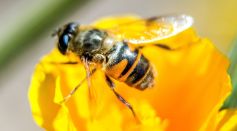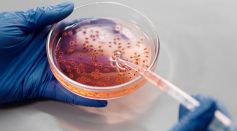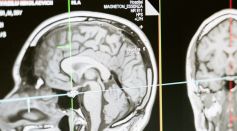Tags: Protein
Enzyme Origins Traced Via Evolutionary Time Travel to Know How They Evolved Over Time

Hormones, Couples' Romantic Passion Levels, May Be Affected by Their Exposure to Sunlight
Solving the Prions' Puzzle: Medical Imaging Breakthrough Completes 30-Year-Old Project
Mammalian Retrovirus-Like Protein: This May Help Expand mRNA delivery; Potential Solution for Nucleic Acid Therapies
Protein Associated with Parkinson's Disease Can Cause Damage to Cellular Powerhouses; Researchers Investigate the Contribution of Alpha-Synuclein to the Problem
Protein Involved in Tumor Growth May Help Protect Against Neuronal Decay, Prevent Neurodegeneration

Different Kind of Anger Management: Angry Bees Found To Create Richer Venom Good for Medicinal Use
Heart Failure Treatment: New Research Shows How Protein May Help Fix This Condition

Protein Droplets Viscosity and Surface Tension Leads to New Neurodegenerative Disease Indicators, Targets Solution to Alzheimer's, Parkinson's, ALS

Neuroproteomes: New Method of Labeling Proteins in the Brain, May Benefit Therapy for Parkinson’s, Alzheimer’s Disease

COVID-19 Diagnostic Test Using Enzyme Being Developed in CRISPR-Based Research to Get Accurate Results in Just 20 Minutes

AI Innovation 'AlphaFold' May Lead to Human Proteome Revolution!

World's Most Expensive Drug: How Can This NHS-Approved Treatment Save Life of 10-Month-Old Boy?
Protein Superglue! New Approach to Pick Therapeutic Drugs Developed for a Healthy Body

What Does COVID-19 Exactly Do to Your Body? New Virus Model Shows How Virus Hijacks Human Protein and Infect Lungs

Eco-Friendly Protein Battery Available Soon? New Discovery Could Phase Out Lithium-Ion Battery
Studying Protein Levels in Aging Kidneys Could Lead to Better Treatments
Why Limited Eating of Meat Is Linked to Healthy Ageing

German Scientists Develop a Designer Protein That Enables Paralyzed Mice To Walk Again

Neuroscientists Isolate Promising Tiny Antibodies Produced by a Llama in Fight Against COVID-19
Most Popular

Ocean Acidification, Marine pH Change, and CO2 Absorption: How Coral Reef Damage and Shellfish and Plankton Impacts Threaten Marine Life

Dark Matter Explained: What We Know, What We Don't, and How It Shapes Cosmic Structure

Memory and Learning: How the Brain Stores, Retrieves, and Forgets Information

Water, Carbon, and Nitrogen Cycles: How Biogeochemical Cycles Sustain Earth's Ecosystems




